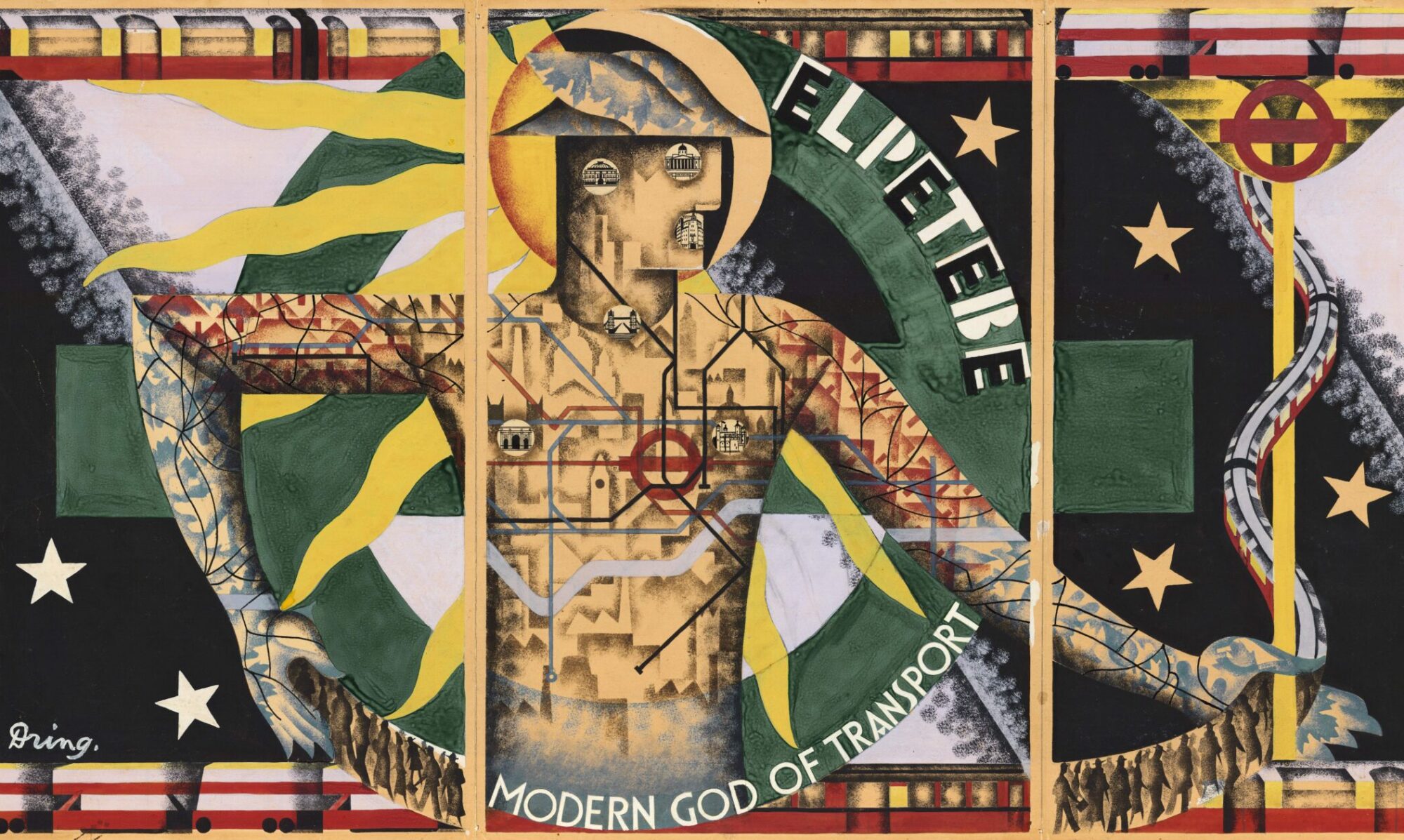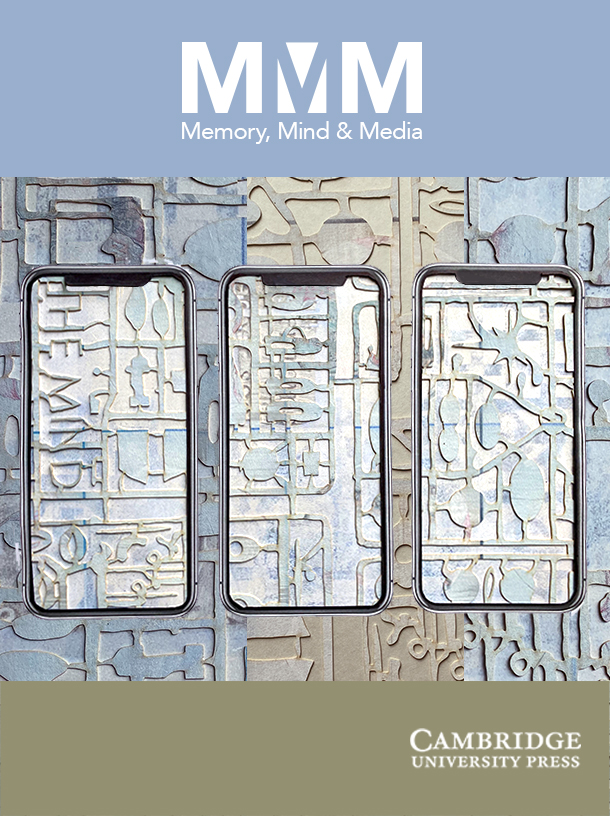Our all new and continued research projects starts in January 2024 within Siegen University’s Media of Cooperation. Here is a poster preview of what we are aiming at in the next four years.
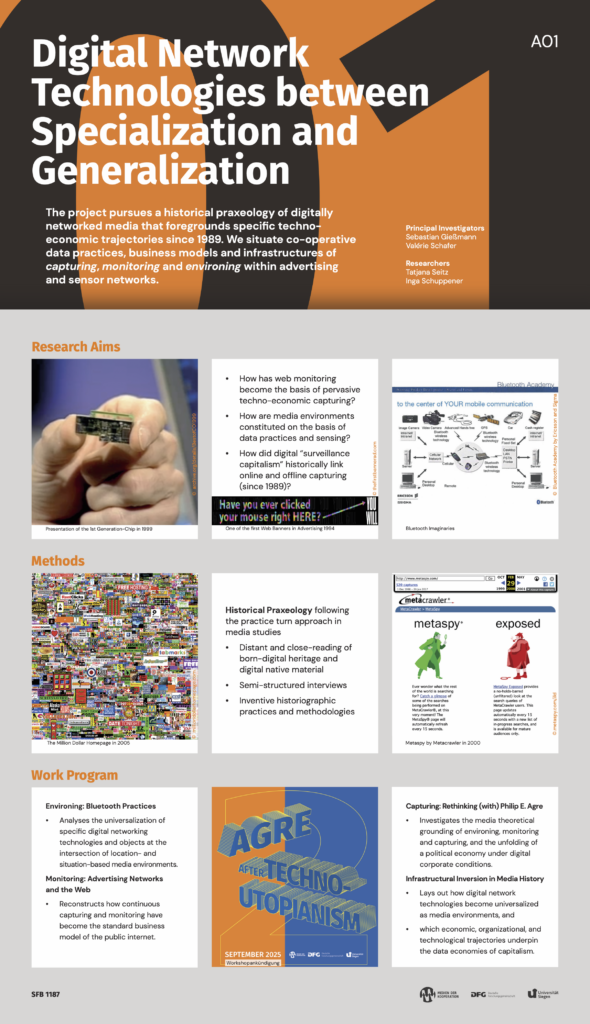
Materiality of Cooperation
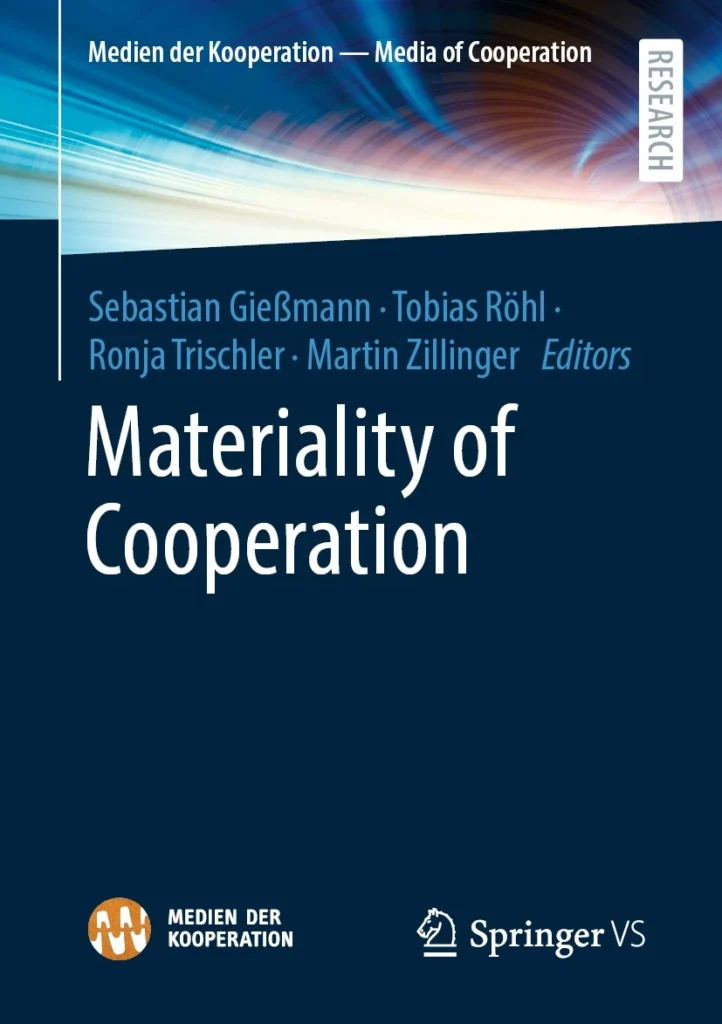
The volume investigates the socio-material dimension and media practices of cooperation – before, during and beyond situations. Cooperation is understood as reciprocal interplay operating with or without consensus, in co-presence or absence of the involved actors in distributed situations. Artefacts, bodies, texts and infrastructures are the media that make cooperation possible. They enable and configure reciprocal accomplishments – and are themselves created through media practices in cooperative situations.
Pre-Face
Materiality of Cooperation—An Introduction
Sebastian Gießmann, Tobias Röhl, Ronja Trischler
Before the Situation
Memory, Mind and Media
There is a new open access journal in the making, and I am glad to be part of its editorial board. Please check out the homepage of Memory, Mind and Media at Cambridge University Press. While its official launch date is 2022, first online articles will be published by mid-2021. The journal is edited by Andrew Hoskins (University of Glasgow, UK) and Amanda J. Barnier (Macquarie University, Australia).
Memory, Mind & Media (MMM) explores the impact of media and technology on individual, social and cultural remembering and forgetting. This agenda-setting journal fosters high-quality, interdisciplinary conversations combining cognitive, social and cultural approaches to the study of memory and forgetting in the digital era. The pervasiveness, complexity and immediacy of digital media, communication networks and archives are transforming what memory is and what memory does, changing the relationship between memory in the head and memory in the wild.
MMM offers a new home for a wide variety of scholars working on these questions, within and across disciplines, from history, philosophy, media studies, cultural studies, law, literature, anthropology, political science, sociology, neuroscience, psychology, cognitive and computational science and elsewhere.
The journal gives priority to submissions that are cross-disciplinary and/or interdisciplinary, experimental, agenda-setting and push the boundaries of existing knowledge and methods. The journal insists on jargon-free, plain English submissions to ensure a widely accessible forum for cutting edge work.
MMM is a high-quality, peer-reviewed journal, publishing online and Open Access. As a barrier-free Gold OA journal, a fee waiver system is in place for unfunded authors. You can submit your article using our online submission system here. General queries should go to memorycambridge@gmail.com.
Your Computer Is on Fire
„Techno-utopianism is dead: Now is the time to pay attention to the inequality, marginalization, and biases woven into our technological systems.“ This quote on the MIT Press website is an excellent motto for this provocative collection.
I am very glad to co-host the European book launch of YOUR COMPUTER IS ON FIRE together with Armin Beverungen. Feel free to join us on April 28, 7pm CET, via Zoom! Please register via email at cdcforum [/at/] leuphana.de for videoconferencing details. And yes, this is a joint event of Siegen University’s CRC „Media of Cooperation“ and Leuphana University’s „Centre for Digital Cultures“ .
Eben noch auf Twitter
Medien sind der Maßstab aller Praxis.
— Sebastian Gießmann (@sebgiessmann) September 23, 2020
Digital Network Technologies between Specialization and Generalization
![Tim Berners-Lee demonstrates the World Wide Web to delegates at the Hypertext 1991 conference in San Antonio, Texas [CERN-IT-9112021-01]](https://netzeundnetzwerke.de/wp-content/uploads/2020/02/berners_lee_san_antonio_1991_FARBE.png)
Based on historical case studies focused on media and data practices, the project reconstructs the co-operative creation of networked media since 1989. From a media-historical perspective, it aims to provide a contribution to the European and transatlantic history of the Internet and the World Wide Web. From a media-theoretical perspective, the project aims to develop and specify a concept of digitality that takes into account its cooperative emergence, its infrastructural maintenance, universalization, and its specific publics.
We thereby focus on the constitutive role of a) interchangeability of representations and the growth of digital systems, b) cooperative production of interoperability and modularity, and c) elementary practices of reading, writing and algorithmic control. The three work packages of the project explore
- the constitution of the World Wide Web via its situated work constitution (Gießmann, Schüttpelz, Taha, Volmar),
- the development of intranets using the example of German corporate networks (Taha) and
- the emergence and spread of IP-based real-time communication via instant messaging (Volmar).
We assume that the establishment of the Internet and especially the World Wide Web as a public general-purpose infrastructure has lead to a remediation of cooperative practices of local working contexts. The project therefore therefore reconstructs the emergence and proliferation of web applications as a software- and data-oriented infrastructural history of cooperative media. We focus on the mutual production of cooperative conditions from collective, locally limited as well as translocally distributed work contexts and the corresponding situated data practices and arrangements (such as format usage, user administration, file sharing, collaborative processing of files, programming, error correction, patenting, standardization, etc.).
We are particularly interested in the interactions between work practices and the specific requirements for cooperation they produce, and in the materializations and affordances of digital micro-practices, through which cooperative conditions are ultimately realized in the form of digitally networked applications. We analyze these dynamics before the background of a longue durée of bureaucratic and administrative processes. These form the underlying socio-technical conditions that determine the materiality of cooperative computing, networking and data processing.
This research project is a part of the Collaborative Research Center „Media of Cooperation“ at Siegen University. Feel free to contact us anytime! Up to date publications can be found at our Media of Cooperation homepage.
Principal Investigators: Dr. Sebastian Gießmann | Prof. Dr. Erhard Schüttpelz
Researchers: Dipl. Medienwirtin Nadine Taha | Dr. Axel Volmar
Comenius Visiting Professor: Thomas Haigh
Mercator Fellow: Valérie Schafer
McLuhan: Media as Art Forms
“The use of the term ‘mass media’ has been unfortunate. All media, especially languages, are mass media so far at least as their range in space and time is concerned. If by ‘mass media’ is meant a mechanized mode of a previous communication channel, then printing is the first of the mass media. Press, telegraph, wireless, gramophone, movie, radio, TV, are mutations of the mechanization of writing, speech, gesture. Insofar as mechanization introduces the ‘mass’ dimension, it may refer to a collective effort in the use of the medium, to larger audiences or to instantaneity of reception. Again, all of these factors may create difficulty of ‘feedback’ or lack of rapport between ‘speaker’ and audience. There has been very little discussion of any of these questions, thanks to the gratuitous assumption that communication is a matter of transmission of information, message or idea. This assumption blinds people to the aspect of communication as participation in a common situation. And it leads to ignoring the form of communication as the basic art situation which is more significant than the information or idea ‘transmitted’.”
McLuhan, Marshall. 1954. ‘Notes on the Media as Art Forms’. Explorations. Studies in Culture and Communication 2 (August): 6–13, 6. Edited by Edmund S. Carpenter.
(This is still one of my favourite McLuhan quotes. I makes a blast, and resets our intuitions. Mass mediation is just an effect of mechanization taking command – now go insert ‘cooperation’ instead of 1950s ‘communication‘!)
Circulating Indexicality, Cyberspace and the Early Web
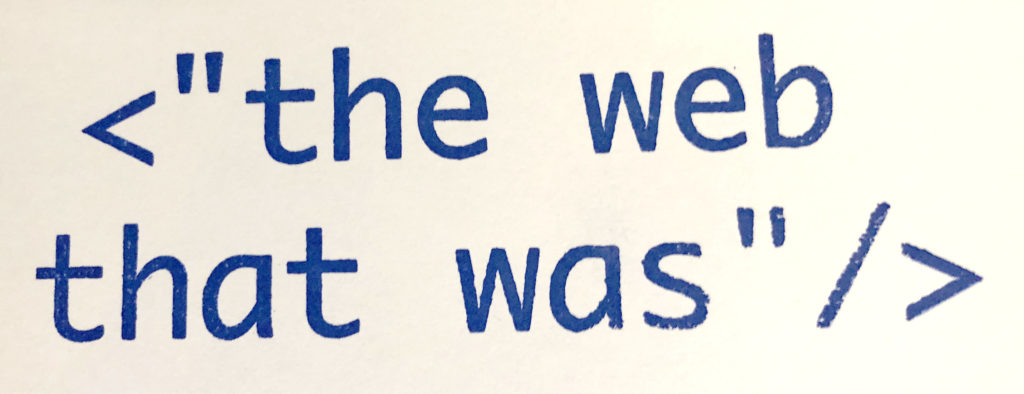
Looking back at 1990s representations of cyberspace always makes one feel alienated, a bit dislocated, and amazed at the same time. Did the American and Western European grasp of the World Wide Web really mix it with imaginations of cyberspace, all of the time? How could the mundane interfaces, modems, and slowly loading websites give rise to such an enthusiastic mapping of online spatiality, creating an unique visual culture of new cyberspaces? Some explanations for this are easier to give: Cyberpunk, Gaming Cultures and Media Arts had been engaged with online spatiality before the Web grew exponentially in a short time. Interlinking public, and especially urban space with representations of digital cities and information landscapes also did not start with the Web, as Kirsten Wagner has shown as early as 2006 (Wagner 2006). Yet some of the Web’s practices became quickly engaged with a translation of urbanity into cyber-urbanity, and affording a new situationist dérive while surfing. John Perry Barlow’s “Declaration of Independence” attempted to remove the cyberspace from the realm of old statehood and legality, while addressing its representatives at the highly localized 1996 World Economic Forum in Davos.
A lot of this resonates in and with Martin Dodge’s and Rob Kitchin’s seminal work of “Mapping Cyberspace” (2000), which we want to revisit here. For them, the “Web has become such a powerful interface and interaction paradigm that is the mode of cyberspace, particularly for the mass of users who only came online since the mid-1990s.” (Dodge/Kitchin 2000, p. 3). Along with Dodge and Kitchin, a slightly more systematic explanation can be made about the dynamics between locating the Internet, and the Web, topographically while at the same time accounting for its feelingly new information spaces and attaching a topological spatiality to them. Relations between topography and topology are, as I would like to argue, always shifting and relational, thereby relying on the evaluations of what kind of indexicality a mapping wants to achieve. So neither is topography bound to mimetic mappings of actual geographic space, nor is topology something only to be found in the realm of abstract diagrammatics and mathematics that refrain from any geo-indexicality. Methodologically, Dodge and Kitchin appropriated the whole range of digital cartographic options at hand, including a multitude of distributed mappings of geographers at universities and telco companies. Geo-indexicality thus almost always remained topical, even if it was absent in representations of, let us say, a hyperlink topology between websites like Ben Fry’s Valence (1999). “[G]eography continues to matter, despite recent rhetoric claiming the ‘death of distance’.” (Dodge/Kitchin 2000, p. x.)
„Circulating Indexicality, Cyberspace and the Early Web“ weiterlesen